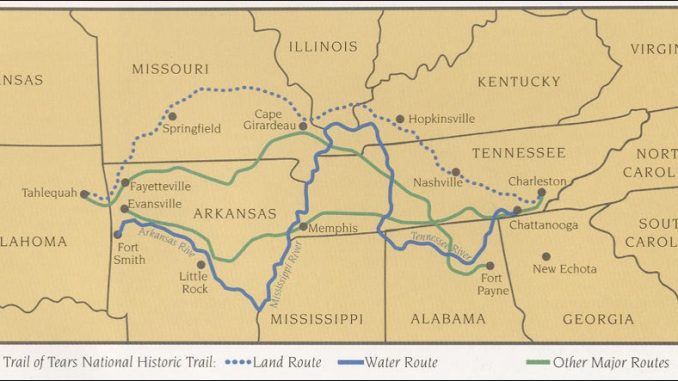
In American history classes, lessons have focused on the slavery of thousands of Africans by their white enslavers. What most people don’t know however, is that Native Americans also took part in owning slaves.
The effects that slavery had on immigration in the early 1800s had great implications for southern life and aided in escalating events that led to the Civil War. Nakia Parker, a Ph. D. at the University of Austin, Texas, said we need to think of new ways to look at events in history we thought were familiar.
“Without considering people’s migration to Indian territory, we have an incomplete understanding of slavery or native participation in this practice,” Parker said.
Parker gave a speech on Tuesday, April 19, focusing on the effects of Black and Indian migration from the time of the Indian Removal Act of 1830 to the Dawes Act of 1887. Her talk focused on the people in the southwest borderlands who were enslaved by the Cherokee, Choctaw and Chickasaw Indians.
These different groups in the borderlands combined with a lack of centralized authority in the south caused slavery and territory to be highly volatile and contested. The social fluidity of the space escalated tension to the point of kidnapping slaves and raiding holder’s territories.
“This exacerbated the uncertainty that characterized much of enslaved life in the 1830s,” Parker said.
The migration of black bodies across time and the trauma they faced while enslaved are an integral part of understanding slavery. Parker said that by exploring the lives of the enslaved, we can understand how it may have molded African-American identities and culture, as well as conceptions of citizenship.
During this domestic slave trade era, the first and second middle passage transplanted millions of African bodies from the upper to the lower south. Parker proposed another event that took place that can be deemed as a third middle passage, which is the removal of thousands of enslaved people with their native enslavers from the south eastern parts of the United States to resettle in Indian Territory in other areas.
“In 1830, [President] Andrew Jackson signed the Indian Removal Act, which removed the natives from the southeast to Oklahoma,” Parker said. “After the removal of Indian Territory during the Trail of Tears, hostility broke out between slaveholders.”
According to Parker, hostility didn’t end there. An excerpt from a Houston newspaper said that disturbances and feuds were stirring amongst the Cherokee who resided in Arkansas. People began to fear that a bloody combat would take place.
This excerpt of the fear of migration gives us an idea of the political and social environment of the time. To understand how this fear may have affected the enslaved as well as the owners, Parker said that there must be an understanding of the direct correlation of the native slave holder’s management and control over enslaved people.
Another excerpt from an autobiographical account of one slave revealed how their surrounding areas and living experiences were altered by the hostility amongst the slave holders. A woman of African descent named Chainey Richardson knew nothing but war as her old master was constantly on the lookout for other tribes he was feuding with.
This feud got so bad that when an aid went up a road to get supplies, she never came back and was later found dead. Other tribes did what they could to hurt the other owner’s property. African descents stood out as commodities and valuables, and destroying someone’s property hurts a slave holder’s financial interest and their honor for being unable to protect it.
Parker said that many times a historical view can always be different from a known view. Only by understanding the effects of the trauma and migration these slaves had suffered due to the escalation of handlings under Indian slave holders, can allow us to better piece together the history we all have come to know.
“Only by piecing the history of these people together can we better understand the causes and motivations that helped lead to the Civil War,” Parker said.
